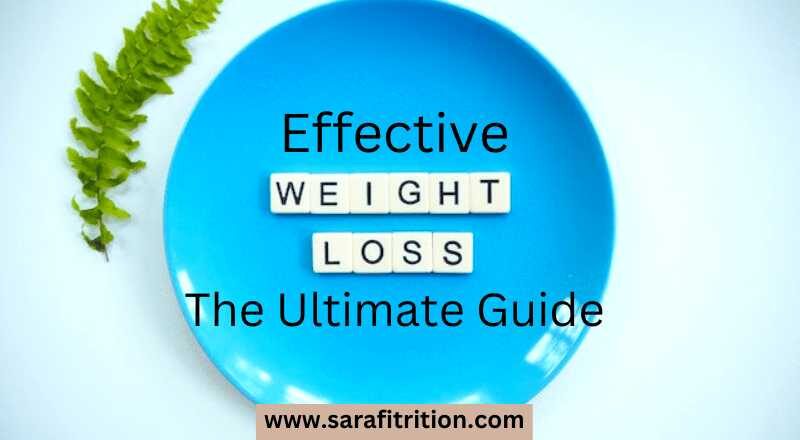Losing weight can be a challenging and confusing process, especially with the countless diet plans and weight loss methods available. However, achieving a healthy weight and maintaining it is essential for a long and fulfilling life. The key to successful weight loss lies in creating a balanced and sustainable approach that combines a healthy diet, regular physical activity, and lifestyle changes.
Understanding Weight Loss
Weight loss is a reduction in body mass achieved by burning more calories than you consume. This can be done by reducing caloric intake, increasing physical activity, or a combination of both. The amount of weight you lose will depend on several factors, including your starting weight, calorie intake, and level of physical activity.

The Importance of a Healthy Diet
A healthy diet is the foundation of any weight loss program. Eating a balanced diet that is low in processed foods, sugar, and saturated fat, and high in fruits, vegetables, and whole grains is crucial for achieving and maintaining a healthy weight. Additionally, it’s important to pay attention to portion sizes and not to skip meals.
Eating slowly and mindfully can also help prevent overeating and promote feelings of fullness. Staying hydrated by drinking plenty of water and limiting sugary drinks can also aid in it.
Regular Physical Activity for weight loss
Physical activity plays a crucial role in weight loss and overall health. Regular physical activity can help increase muscle mass, boost metabolism, and burn calories. Aiming for at least 30 minutes of moderate-intensity physical activity, such as brisk walking, five days a week can lead to significant health benefits and weight loss.
Combining cardiovascular exercises, such as running or cycling, with strength training exercises, such as weightlifting, can also help increase muscle mass and boost metabolism, leading to more efficient weight loss.
Lifestyle Changes
Incorporating lifestyle changes, such as stress management, getting enough sleep, and avoiding sedentary behavior, can also play a significant role in it.
Stress can lead to overeating and weight gain, so finding healthy ways to manage stress, such as exercise, meditation, or hobbies, can be beneficial. Getting enough sleep and avoiding sedentary behavior, such as prolonged sitting, can also aid in weight loss and overall health.
Understanding the Difference Between Weight Loss and Fat Loss
Weight loss and fat loss are two of the most commonly discussed health and fitness topics, but despite their frequent use in conversation, many people still do not understand the difference between the two. While they may seem interchangeable, weight loss and fat loss are actually two distinct processes with different goals and outcomes.

In this article, we will delve into the differences between weight loss and fat loss, the benefits and drawbacks of each, and provide tips for achieving the best results.
What is Weight Loss?
Weight loss refers to a decrease in total body weight, which can be the result of a variety of factors including reducing body fat, water loss, and muscle loss. When someone engages in a weight loss program, their goal is often to lose as much weight as possible, as quickly as possible.
This can be accomplished through a combination of diet and exercise, and may involve cutting back on calorie intake, increasing physical activity, or a combination of both. While weight loss may be a goal for many people, it is important to remember that simply reducing weight is not necessarily the same thing as losing body fat.
What is Fat Loss?
Fat loss, on the other hand, refers specifically to the loss of body fat, without considering changes in muscle mass or water weight. Fat loss is often the goal for people who are looking to improve their body composition and overall health, as opposed to simply reducing the number on the scale.
While diet and exercise are still important components of a fat loss program, the focus is on creating a calorie deficit specifically through reducing body fat, rather than just overall weight. This can involve incorporating resistance training to build muscle and increase metabolism, as well as engaging in regular cardio exercise to burn fat.
Weight loss can be a quick and visible way to improve overall health, but it can also lead to unwanted side effects such as muscle loss, dehydration, and a slower metabolism. While it may provide quick results, it is not necessarily sustainable or healthy in the long term.

Fat loss, on the other hand, provides more sustainable and healthy results. By focusing on reducing body fat and building muscle, individuals can improve their body composition, increase their metabolism, and reduce the risk of developing chronic health conditions such as heart disease and diabetes.
The Bottom Line
Losing weight and maintaining a healthy weight is a journey that requires a combination of a healthy diet, regular physical activity, and lifestyle changes. By focusing on these key areas, you can achieve and maintain a healthy weight, improve your overall health, and lead a fulfilling life.
Pros and Cons of Different Dieting Plans
There are many different approaches to dieting, each with its own set of pros and cons.
Low Carbohydrate Diet for weight loss
Low carbohydrate diets are based on the idea that limiting the intake of carbohydrates will result in weight loss. Some of the benefits of this type of diet include rapid weight loss, reduced appetite, and improved blood sugar control. However, there are also some drawbacks to this approach, such as the risk of nutrient deficiencies, the need to carefully monitor food intake, and the potential for harmful side effects like ketoacidosis.
Low Fat Diet
Low fat diets are based on the idea that reducing the amount of fat in the diet will result in weight loss. This type of diet typically includes a high proportion of carbohydrates and low amounts of fat. Some of the benefits of this approach include lower levels of cholesterol, reduced risk of heart disease, and improved blood sugar control. However, there are also some drawbacks to this approach, such as the risk of overeating, the need for careful monitoring of food intake, and the potential for nutrient deficiencies.

Intermittent Fasting for weight loss
Intermittent fasting is an approach to dieting that involves alternating periods of fasting with periods of eating. This type of diet can be very effective for weight loss, as it helps to reduce overall calorie intake. Some of the benefits of this approach include improved insulin sensitivity, increased energy levels, and reduced risk of certain chronic diseases. However, there are also some drawbacks to this approach, such as the need for careful planning, the potential for nutrient deficiencies, and the risk of overeating during non-fasting periods.
Caloric Restriction
Caloric restriction involves reducing overall calorie intake in order to lose weight. This type of diet can be very effective for weight loss, as it helps to reduce overall calorie intake. Some of the benefits of this approach include improved insulin sensitivity, increased energy levels, and reduced risk of certain chronic diseases. However, there are also some drawbacks to this approach, such as the need for careful planning, the potential for nutrient deficiencies, and the risk of overeating during non-fasting periods.
Mediterranean Diet for weight loss
The Mediterranean diet is based on the traditional eating patterns of people living in the Mediterranean region. This type of diet is characterized by high levels of fruits, vegetables, whole grains, and healthy fats, with limited amounts of red meat and dairy products. Some of the benefits of this approach include improved heart health, reduced risk of certain chronic diseases, and improved overall health.
Tips for Achieving the Best Results
To achieve the best results, it is important to focus on a combination of diet and exercise that is tailored to individual needs and goals. This may involve reducing calorie intake, increasing physical activity, and incorporating resistance training into a fitness routine.
It is also important to be patient and consistent in efforts to achieve fat loss. Slow and steady progress is more sustainable and effective in the long term than rapid weight loss, and can lead to improved overall health and body composition.
Conclusion
In conclusion, there are many different dieting plans to choose from, each with its own set of pros and cons. The best approach for you will depend on your individual needs and goals, as well as your personal preferences. When choosing a dieting plan, it is important to carefully consider the potential benefits and drawbacks, and to work with a qualified healthcare professional to ensure that you are making the best choice for your health and well-being.

